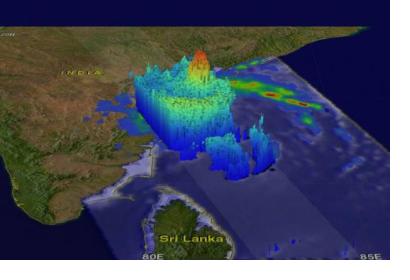On 18 May 2016, the National Aeronautics and Space Administration (NASA) and its associated agencies captured Global Precipitation Measurement (GPM) images of tropical cyclone Roanu in the Bay of Bengal. The hazard had negative effects on Sri Lankan and Southern Indian regions. Although the storm was a relatively weak, it provoked landslides and heavy flooding, increasing the death toll to 75 people in Sri Lanka as thousands of homes remain inundated. Nearly 22 of Sri Lanka’s 25 districts have been affected by the rains according to disaster officials. More than 120 people are still missing.
The International Charter Space and Major Disasters was activated at the request of the Asian Disaster Reduction Center (ADRC) on behalf of the International Water Management Institute (IWMI) which is based in Sri Lanka. The Asian Institute of Technology has been designated by the Charter to serve as project manager in this activation.
Civilian volunteers as well as the international community already went into action, offering relief items, providing drinking water and sending disaster management experts.
Space-based information is very useful in the context of hydrometeorologic hazards. Systems such as the GPM can assist in tracking tropical cyclones, typhoons and hurricanes around the world, providing information on their path, which is very useful for civil protection authorities to issue warnings and mobilize people to safe areas before such tropical storms reach coastal areas.
More information on the Charter is available on this page:
https://www.disasterscharter.org/web/guest/activations/-/article/flood-in-sri-lan-1
More information about the situation is available on this page:
http://www.theguardian.com/world/2016/may/21/sri-lanka-landslides-torrential-rains

